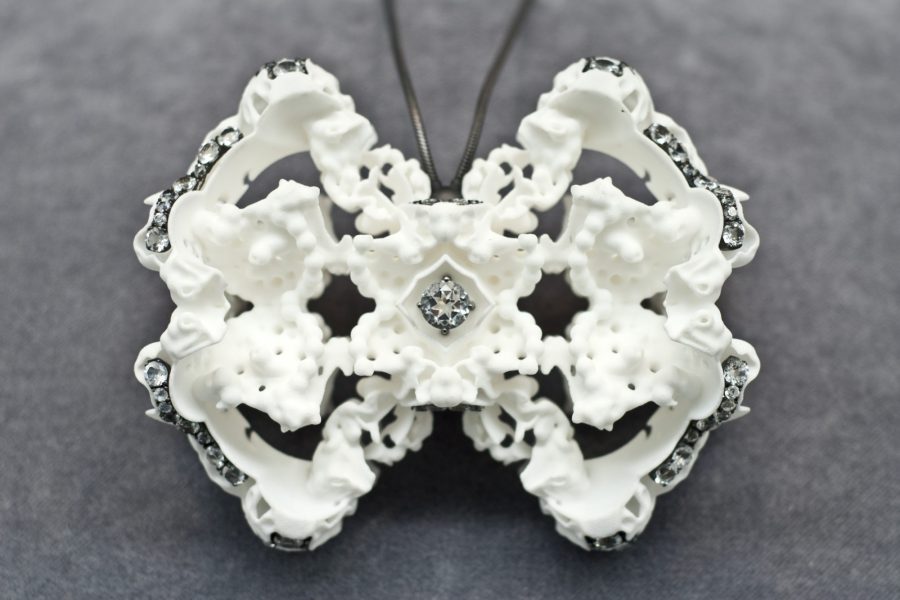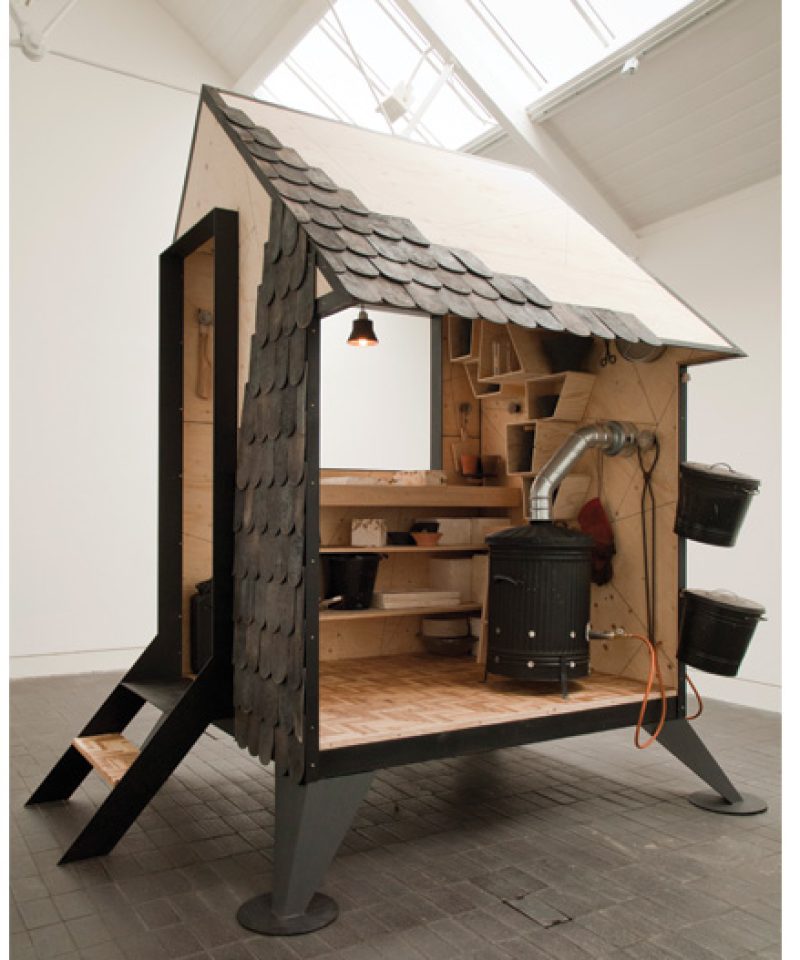In Edmund de Waal’s magisterial The Hare with The Amber Eyes, the author and potter suggests a possible history that has yet to be written: a history of touch.
De Waal’s book is a family history told through the prism of an inherited set of Japanese netsuke — small toggles traditionally threaded onto the sash of a kimono, and carved into intricate vignettes of daily life. These small objects of hard wood or ivory depicted scenes that might once have been both familiar and strange — coopers emerging from barrels, tigers curled into fearsome balls, a bundle or rats spilling over each other in a tightly knotted clump.

Collection of Edmund de Waal. Image: Michael Harvey
Craft objects are, in general, ones we might hold in our hands, to feel their weight, hardness and to trace with our fingers their maker’s mastery. Netsuke, as an emblem of the tactile and transportable, are ideal objets. They can be caressed and lost in a pocket, and are tough enough to outlast their owners by several generations.
Exhibitions of craft objects are different. They are not designed for touch. Display etiquette precludes physical intimacy.
But at this year’s Jerwood Makers Open, on view now at JVA at Jerwood Space, five craftspeople have put works on display that seem to toy with the viewer’s desire to press finger to surface, to feel the heft and density of things.
Nao Matsunaga, James Rigler, William Shannon, Louis Thompson and Silvia Weidenbach were each awarded £7,500 to create the works on display at the JVA Space in London (the show will also tour to other venues.)
I’ll look at each maker’s individual more closely over the next few weeks and post more entries. But I shall use de Waal’s notions of touch as a pivotal one, for it seem to me that craft is, and will always remain to some degree – no matter the impacts of norms of display from the other art world as well as the massive impact of digital technologies — a process and experience that is rooted in a personal encounter that is physical, experiential, tactile.
More soon!…

